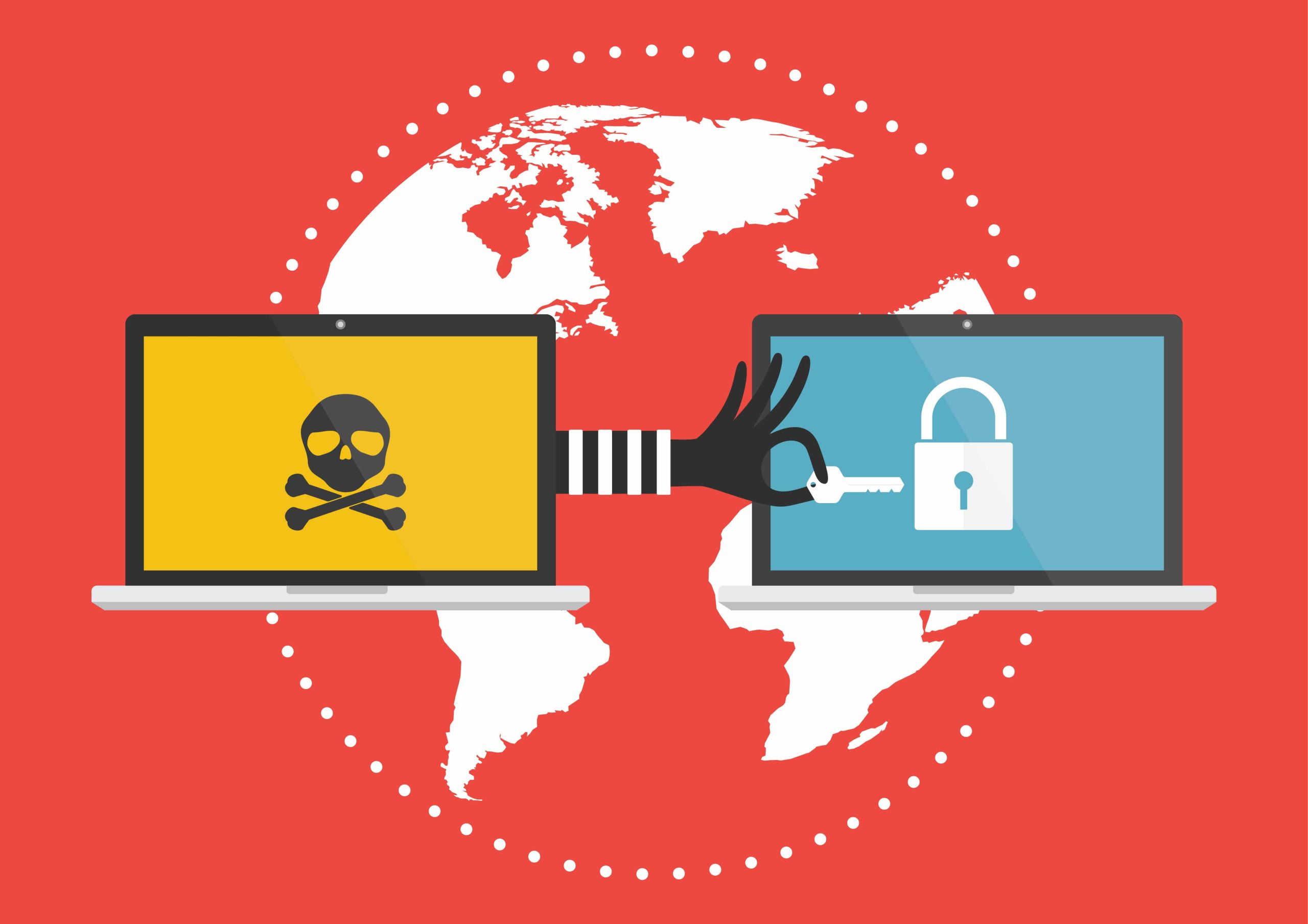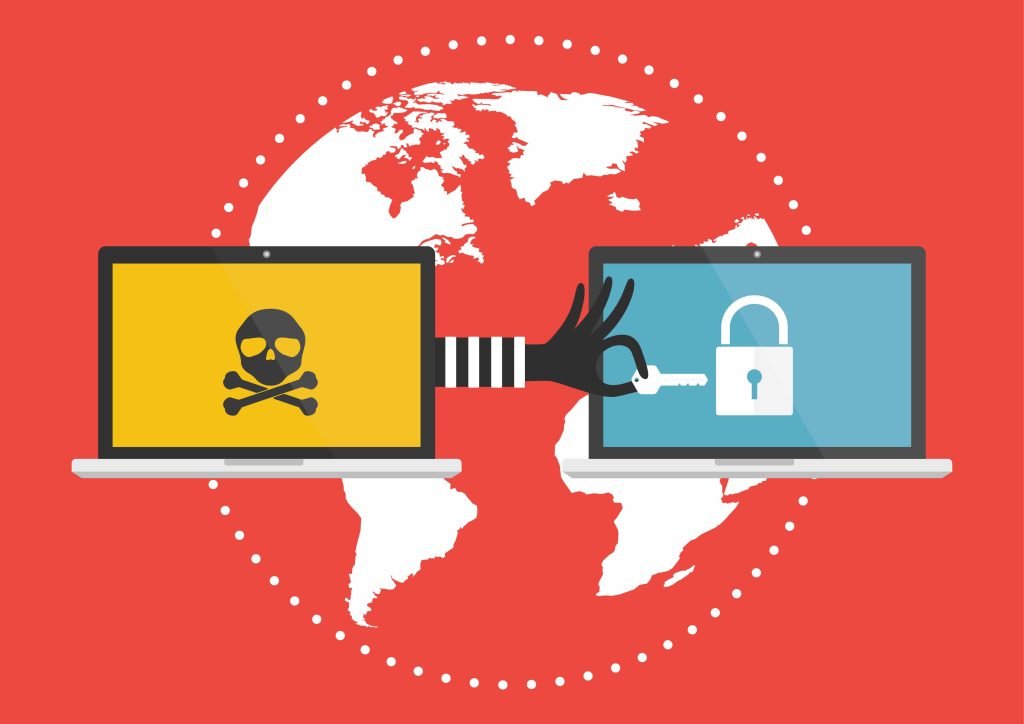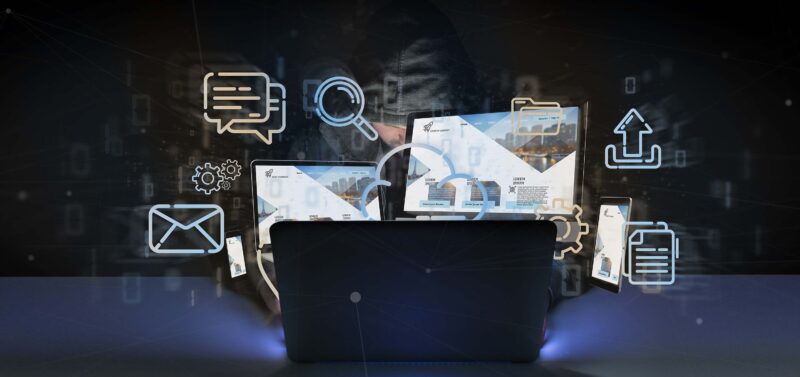Your cart is currently empty!

How to Protect Against 5G and Radiofrequency (RF) Cyberattacks
Last Updated on October 3, 2023

Our ever-evolving digital age has undoubtedly made life more convenient for all, and upgrading our network to higher-than-ever-used-before 5G frequencies will be able to connect anyone and anything.
However, more wireless touchpoints and broader access to information means finding and stealing said information will be easier and more flagrant. Cybersecurity and cyber hygiene, if not an issue you are thinking of now, will soon become a concern for everyone.
5G – Progress, But at What Cost?
5G is the next evolution of data transmission. We will witness data speeds up to 100x faster than previous networks, better Internet experiences, lower latency levels, and a huge upgrade to the Internet of Things (IoT). 5G will fundamentally change everything we know about the interconnection between devices, things, and people worldwide. Or at least that’s what the capabilities are if the logistics can be worked out.
If so, augmented reality will become truly ubiquitous and turn the tables for businesses like gyms and retailer stores. Live TV such as sporting events will be able to be watched from any angle, on any device. The farm, automobile, and hospital industries will be changed forever, and will even have the potential to be run by robots and smart technology. Even your fridge and appliances at home will get a ~smart~ upgrade.
It’s hard to believe that with all of these amazing benefits there could be a downside, but like Icarus in the old Greek myth, we may be flying too close to the sun.
Although the adoption of 5G coinciding with the 55% jump in cybercrime in 2021 may be purely coincidental, 5G’s progression will make cybercrime more frequent, with potentially more disastrous effects.
From both a cybersecurity and an information security viewpoint, it’s understood that a major upgrade of the IoT means devices will be built less secure for operational purposes.
While there will be a rise in some of the more common hacking methods used in 4G networks and lower, such as Botnet attacks, Man in the Middle attacks (MiTM), ransomware attacks, and Denial of Service attacks (DoS), certain hacking methods that are less commonly known, such as radiofrequency (RF) hacking, are expected to quickly gain popularity.
Radiofrequency Hacking – What is it?

The rollout of 5G has begun to shift the network infrastructure from a hardware-based network to a software-based network. Everything can now become wireless, without giving up the faster speeds and bandwidth previously reserved for wired services.
RF attacks target devices with radio communication systems that transmit and receive data using radio waves. This includes all devices that access cellular networks–from the first generation (1G) to the current 5G spectrum–along with WiFi, Bluetooth, GPS, NFC, and more.
A cybercriminal can access important data and information by tuning into your radiofrequency device, wirelessly tethering your information to their device, and then storing the stolen data on an external server.
With 5G putting everything on the same wireless network, it will become easier for hackers to adopt the RF method into their box of tricks, as it goes under the radar of firewalls and network-based connection systems.
When an individual’s laptop or tablet gets hacked, loads of vulnerable data can get accessed, exclusive not just to that individual, but to friends, family and their company. However, hacking into mobile devices was already a capability with previous networks.
With 5G, hackers will hit the ‘mother lode’ by being able to hack automobiles, hospital medical devices, military equipment, doorbells, etc., at instantaneous speeds. As more possessions gain wireless capabilities, they also come with more wireless threats.
The cybersecurity industry has no choice but to grow, and grow quickly, to keep up with all of these major changes.
Who Is At Risk of an RF Attack?
According to an annual Ericsson report, there are 22 billion devices, 15 billion of which contain radios, making them a target of an RF breach. With the rapid adoption of 5G by virtually everyone, this number is only expected to skyrocket. In fact, according to a new report by Juniper Networks, a provider of AI driven networks, predicts there will be over 83 billion IoT connected devices by 2024. Because radiofrequency attacks are extremely hard to mitigate, virtually anyone with a connected device is at risk.
That being said, there are certain groups and individuals that face a higher risk than others. As 5G introduces new risks, high-profile government and military officials, both large and small corporations, and even your average device user can be vulnerable to an RF attack.
Individuals

Although your average individual is at a much lesser risk than some of the high-profile targets listed above, they should still be wary of the wireless networks they are connected to, especially when on-the-go.
While a cyberattack on an average individual may not be detrimental on a large scale, it can still be disastrous and life-changing for that one person. And victims of cyberattacks rarely think they would be the target of one. It really can happen to anyone, and everyone should stay mindful.
The most convenient places for RF-hackers to steal information from an individual include crowded areas with a lot of foot traffic and a large wireless footprint. These end up being traveler hotspots like airports, hotels, downtown areas, and tourist attractions.
Using your phone for GPS to get into your hotel, using Bluetooth to listen to music on your airpods on the plane, connecting to the airport WiFi to shoot an email to your boss–all are things individuals should begin to consider while traveling, or just in their everyday life!
In addition, if you connect to a coffee shop or airport’s WiFi to access work information, you may be putting the cybersecurity of your entire company at risk. Individual cyber hygiene is one of the biggest players in the cyber health of businesses and corporations.
Corporations
Both large corporations and small businesses will need to up their security measures in order to mitigate the cybersecurity risks that will come with their adoption of 5G networks.
Small businesses already account for 43% of all cyber attacks, and make for the perfect target as they often can’t afford the investments into security. With 5G, cybersecurity measures are only expected to increase as security measures will only become more complicated and expensive, making it much harder for small businesses to sustain.
High profile targets working for large corporations will need to be cautious when traveling, or taking important data and information home with them.
The IoT provides countless abilities for cybercriminals to hack into devices via wireless networks, and with RF hacking expected to become more prevalent, a higher level of security will be necessary when carrying important information–new security measures that these high-profile targets may not be used to worrying about.
Governments
5G is expected to pave the way for economic growth, new innovations, and new markets for nations all over the world. No wonder it’s been a race to be the first country to adopt nationwide 5G! In this case, being first may not be the best, because those countries will take the risk of having a vulnerable security system.
5G has only been around for a few years. Because of the major change in network infrastructure compared to previous networks, there are many new security vulnerabilities to the new system that have yet to be vetted–some which are probably still unknown!
In fact, a recent report from top U.S. national security agencies stated that these new developments “introduce serious risks that can threaten national security, economic security, and impact other national and global interests.”
The architecture and development of new technologies will be impacted by adversarial nations as they contribute to new security controls and technical standards. For example, the 5G-dominant nations can sell their emerging technologies in order to influence standards that specifically benefit their technologies and limit the consumer’s choice to use other equipment, which will ultimately force other nations to use untrusted suppliers in their networks.
Militaries
Like governments, militaries will also become more vulnerable to RF-related attacks. On top of being able to compromise important data and information, military equipment and radio-based communication systems used in battle will also become a target via more frequent electromagnetic pulse attacks (EMP).
An EMP attack is a massive burst of electromagnetic energy that can occur naturally or be generated deliberately using nuclear weapons in order to compromise electronic equipment. EMP attacks that are deliberately generated typically happen during war, and can compromise the telecommunications infrastructure of military equipment, ultimately making communication impossible.
How to Mitigate an RF Attack
Because widespread concern for RF attacks is still low, there are very few prevention methods out there. However, there are a few ways in which you can greatly reduce your risk.
- Keep your radio communication services turned off when not in use: Turning off any “auto-connect” capabilities, as well as WiFi, Bluetooth, GPS, NFC, etc., when not in use can mitigate the risk of an RF cyberattack. While less convenient for you, it will also be less convenient for a cyberhacker looking for an easy target.
- Turn on airplane mode: This will disable all cellular, WiFi, and Bluetooth signals, which can eliminate RF attacks on that device.
- Faraday Bags: RF shielded bags (commonly called Faraday bags) are the only real option to protect connected devices from RF espionage. They’re created with 360° military-grade shielding to block all incoming or outgoing radio signals. Even though your device has to be closed and in the Faraday Bag to protect from an RF attack, this can come in handy while you are away from your device or traveling with it.
Faraday Bags Are The Last Line Of Defense
Ranging from phone and laptop sleeves to large duffle bags, Faraday products typically incorporate 360° shielding to block all incoming and outgoing signals from electronic devices to protect from hacking, tracking and other cyber attacks.
Faraday wallpaper has even begun to be used in the homes of high-profile targets such as CEO’s, government officials, etc., as they become more concerned about their privacy.
Faraday ‘cage’ rooms are rooms with 360-degree Faraday shielding, and have been in use for years now as they effectively protect electronic equipment from EMP attacks, as well as keep top-secret information stored on hardware from being hacked from outside sources.
DefenderShield has incorporated its military-grade Ultra Armor Shielding™ Technology, the only shielding in the world capable of blocking the entire 5G spectrum, in a line of Faraday Cybersecurity products, along with creating Ultra Armor Wallpaper for creating an EMF-shielded space.
Becoming Mindful
There’s no question that such high performance levels and data capture that come with the 5G rollout will work in the favor of everyone. But when things fail–and they will–governments, corporations, militaries, and virtually every industry speeding to fully incorporate 5G into their systems, will need to become fully aware of the privacy and security risks that will inevitably transpire.
Upping security levels on the more common ways cybercriminals have been able to steal data and information through past networks is vital, but becoming wary of the growing methods such as radiofrequency hacking–where information is easier for hackers to steal–will be essential.
Faraday bags will become the last layer of cybersecurity defense for anyone trying to diminish the risk of an RF attack. While there are many Faraday bag options out there, make sure to choose one that can block the higher frequencies in the 5G network.
Related Posts
None found



























